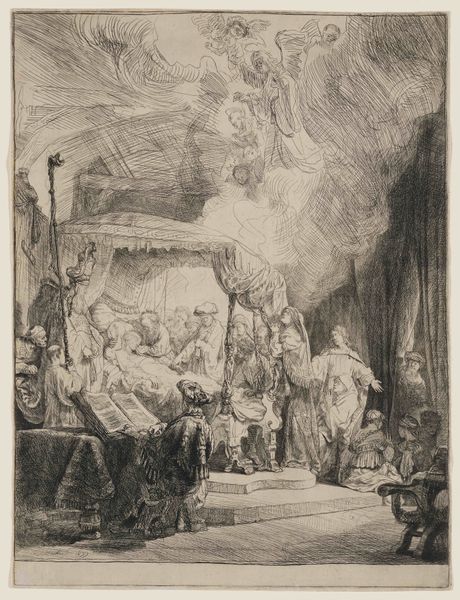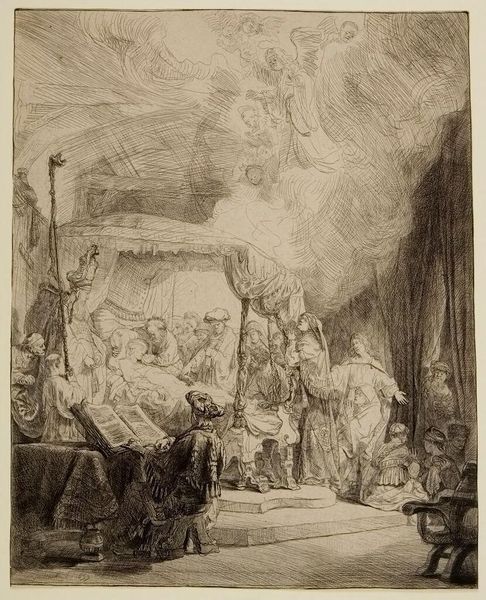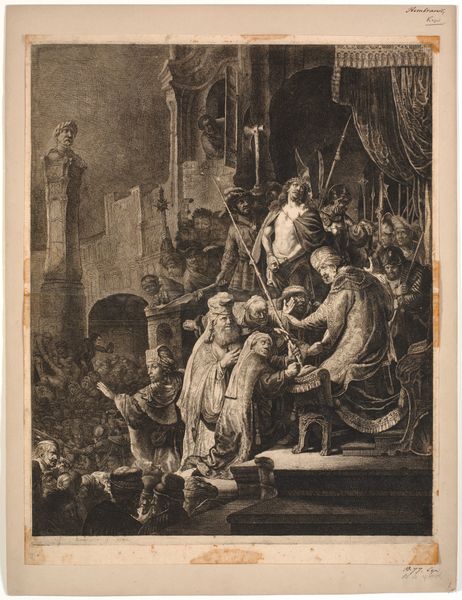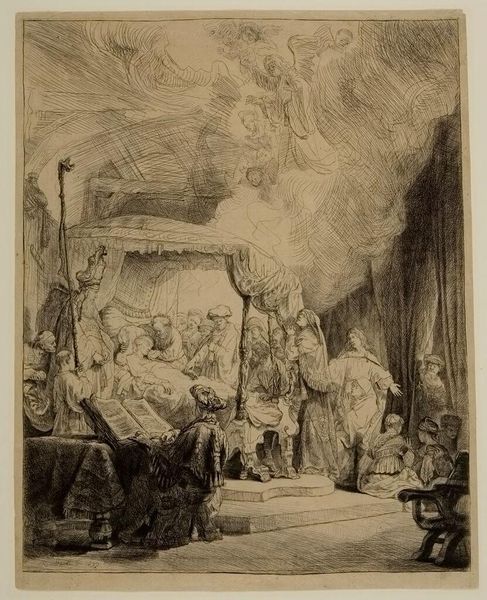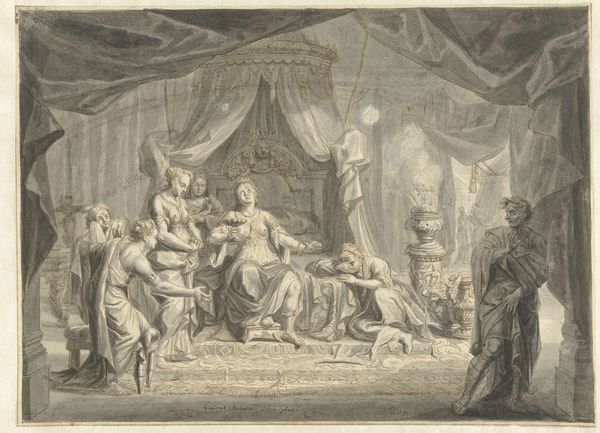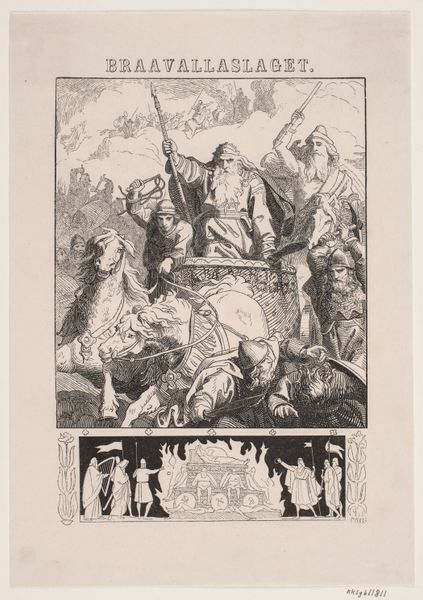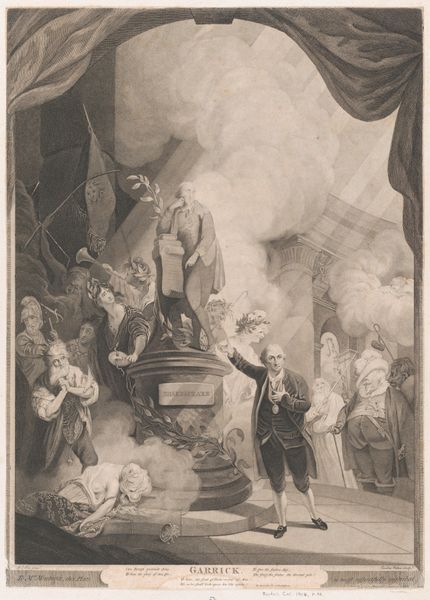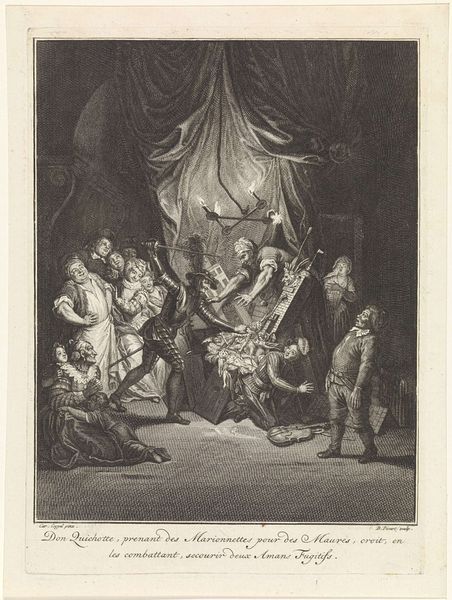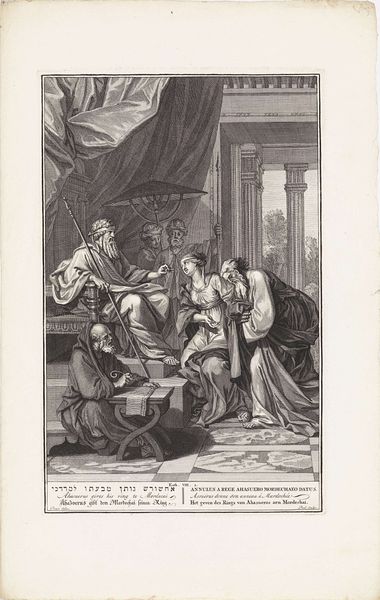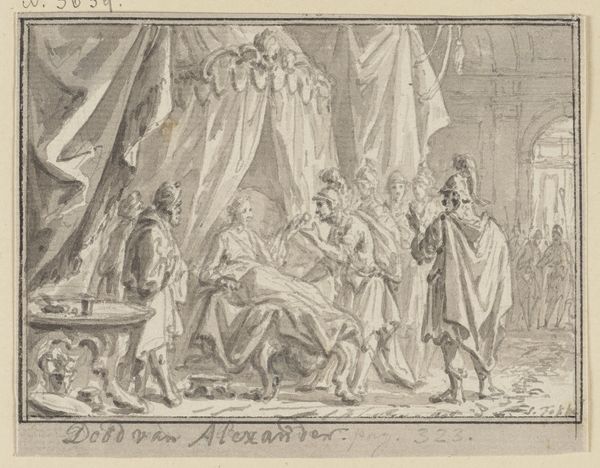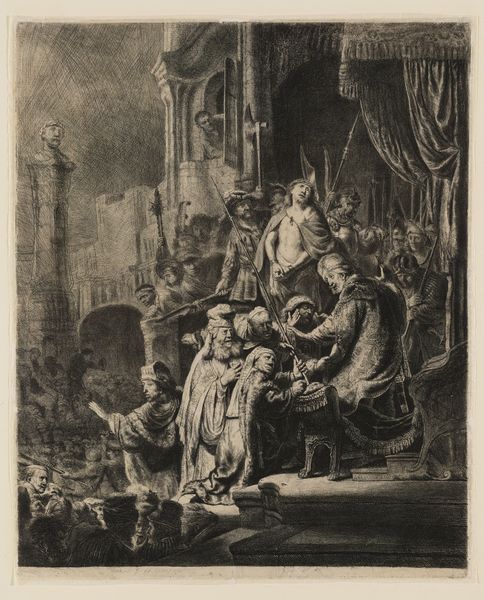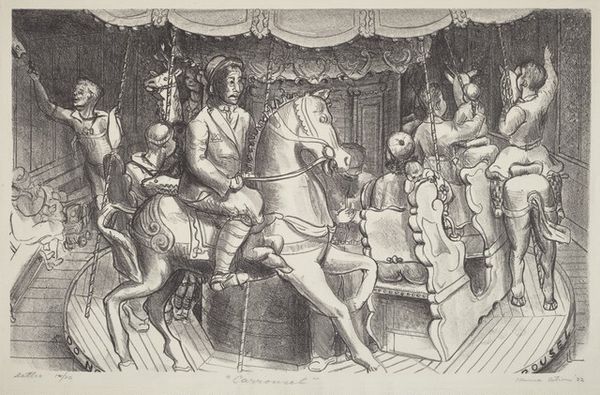
drawing, print, etching, paper
#
drawing
#
medieval
#
narrative-art
# print
#
etching
#
paper
#
pencil drawing
#
history-painting
Dimensions: 105 × 104 mm (image); 111 × 109 mm (sheet); trimmed within platemark
Copyright: Public Domain
Thomas Worlidge made this etching of ‘The Death of the Virgin’ in eighteenth-century Britain. This image depicts a scene of collective mourning, the Virgin Mary on her deathbed, surrounded by a crowd of grieving figures. Worlidge made this etching at a time when the art world was becoming more professionalized and institutionalized, with the rise of art academies, museums, and art criticism. As such, the art market encouraged a more secular, Protestant approach to the art of earlier periods. Worlidge was part of a generation that sought to redefine British art through a renewed engagement with the art of the past. He often paid homage to seventeenth-century Dutch masters, especially Rembrandt, whose etching style he emulated. Understanding this work requires exploring the cultural and institutional contexts that shaped both its creation and reception. Art historians use a range of resources, including archival documents, period criticism, and social histories, to better understand the meaning of art as something that is contingent on its social and institutional context.
Comments
No comments
Be the first to comment and join the conversation on the ultimate creative platform.
